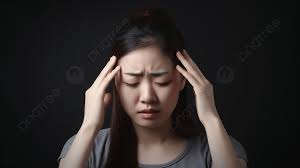A Radiation Tragedy: The Heartbreaking Story of Hisashi Ouchi

Introduction
In the annals of medical history, few stories are as tragic and haunting as that of Hisashi Ouchi. His name has become synonymous with the devastating consequences of radiation exposure, highlighting the ethical dilemmas and medical challenges faced in treating such cases. This article delves into the life of Hisashi Ouchi, the events leading to his exposure, the medical response that followed, and the enduring lessons learned from this poignant chapter in science and humanity.
Hisashi Ouchi: A Life Altered
Hisashi Ouchi was born on March 1, 1972, in Japan. Described as a dedicated and hardworking individual, Ouchi was employed by the Tokaimura Nuclear Power Plant, situated in the Ibaraki Prefecture. His role was crucial in the plant’s operations, reflecting his commitment to his work and his community.
The Tokaimura Nuclear Accident
On September 30, 1999, tragedy struck the Tokaimura Nuclear Power Plant. During a routine processing procedure, an inadvertent criticality accident occurred, releasing an intense burst of radiation. Hisashi Ouchi, along with two of his colleagues, Masato Shinohara and Yutaka Yokokawa, were exposed to incredibly high levels of neutron and gamma radiation. Among them, Hisashi Ouchi received the highest dose, estimated to be around 17 sieverts, an amount that far surpasses the lethal dose for humans.
Immediate Medical Response
The immediate aftermath of the accident was marked by chaos and urgency. The three workers were rushed to the University of Tokyo Hospital, where they were admitted to the intensive care unit. Hisashi Ouchi’s condition quickly deteriorated, manifesting severe symptoms of acute radiation syndrome (ARS). His skin began to blister, and his internal organs began to fail under the relentless assault of radiation.
Ethical and Medical Dilemmas
As Ouchi’s condition worsened, medical professionals faced profound ethical dilemmas. The treatment options were limited and fraught with uncertainty. Despite the medical team’s efforts to stabilize him, Ouchi’s body was rapidly succumbing to the effects of radiation poisoning. The decision to continue aggressive medical intervention became a contentious issue, as debates over the quality of life and the potential for recovery intensified among medical personnel and ethicists alike.
The Controversial Treatment
In a desperate bid to save his life, Ouchi became the first human to receive a transfusion of peripheral stem cells from his sister. This experimental treatment aimed to replenish his severely depleted bone marrow and restore his immune system. However, the procedure failed to reverse the catastrophic damage inflicted by the radiation.
Ongoing Medical Saga
Despite the grim prognosis, Ouchi clung to life for 83 agonizing days. His condition fluctuated between moments of apparent stability and severe deterioration. Throughout this ordeal, the medical team faced the daunting task of balancing hope with the stark reality of Ouchi’s irreversible condition.
Public and International Reaction
The plight of Hisashi Ouchi captured global attention, sparking debates on nuclear safety, radiation exposure limits, and the ethical considerations surrounding experimental medical treatments. The incident prompted soul-searching within Japan’s nuclear industry and led to significant reforms aimed at enhancing safety protocols and emergency response procedures.
Legacy and Lessons Learned
The legacy of Hisashi Ouchi endures as a cautionary tale of the devastating impact of radiation exposure and the ethical complexities of medical intervention in such cases. His story underscores the critical importance of stringent safety measures in nuclear facilities and the imperative of preparedness in responding to emergencies.
Conclusion
The story of Hisashi Ouchi is a poignant reminder of the profound risks associated with nuclear technology and the profound ethical dilemmas faced by medical professionals in treating radiation victims. His tragic ordeal serves as a powerful testament to the resilience of the human spirit in the face of unimaginable adversity, while also highlighting the enduring quest for greater understanding and preparedness in mitigating the effects of radiation exposure.

 Latest Updates on NSE Unlisted Share Price: What You Need to Know
Latest Updates on NSE Unlisted Share Price: What You Need to Know  Best Places for Currency Exchange in Kolkata: A Complete Guide
Best Places for Currency Exchange in Kolkata: A Complete Guide  7000 Puffs Crystal Prime: Your Go-To Manual for the Best Vaping Experience
7000 Puffs Crystal Prime: Your Go-To Manual for the Best Vaping Experience  Cat In The Chrysalis Spoiler – Synopsis, Character Development, Themes And Much More
Cat In The Chrysalis Spoiler – Synopsis, Character Development, Themes And Much More  Innovative Pain Relief Techniques: What’s New?
Innovative Pain Relief Techniques: What’s New?  6 Tips For Choosing Umrah Packages From UK
6 Tips For Choosing Umrah Packages From UK  Exploring London’s Best Butcher Shops
Exploring London’s Best Butcher Shops  Enhance Your Shop Appeal with Sydney’s Best Carpentry Services
Enhance Your Shop Appeal with Sydney’s Best Carpentry Services  A Detailed Look at the Features of the LEGO Technic Mars Crew Exploration Rover
A Detailed Look at the Features of the LEGO Technic Mars Crew Exploration Rover